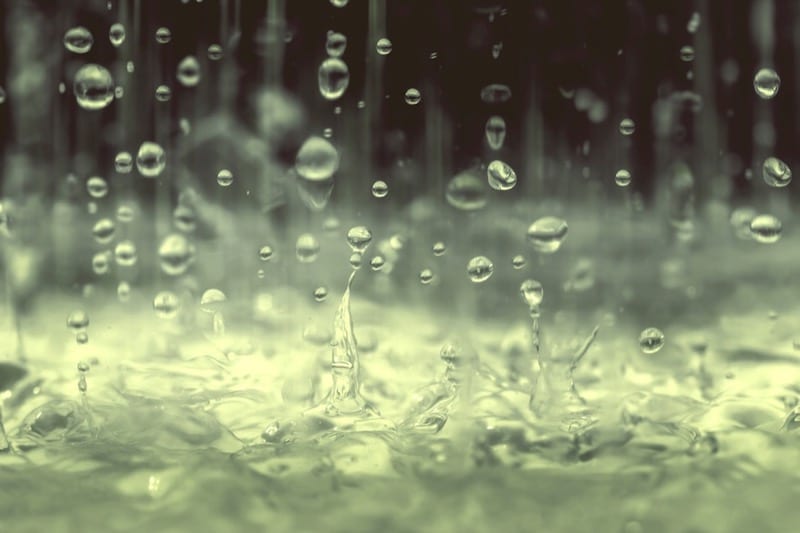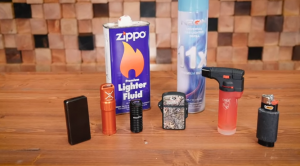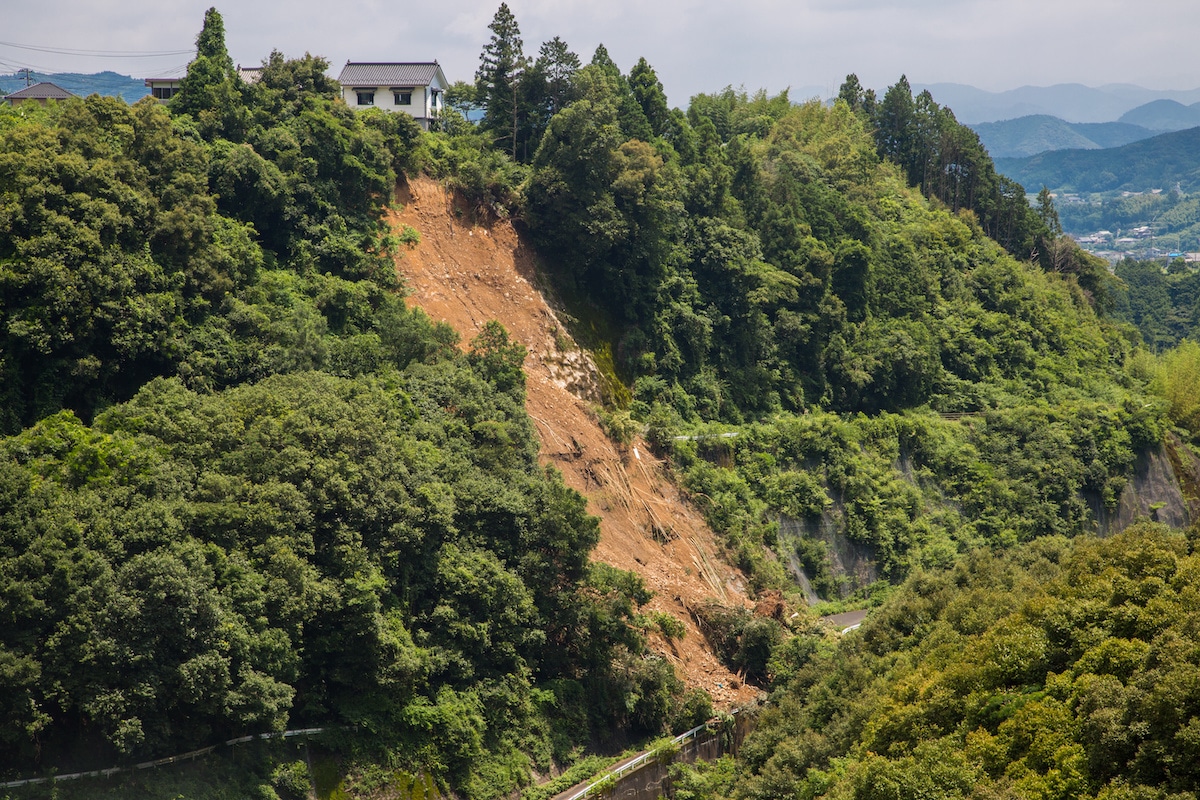If you’re going car camping or RV camping, rain isn’t a big issue. But if you’re tent camping, rain can ruin your camping trip if you don’t know how to handle it.
What We'll Cover
Some people will go into a camping situation fully knowing it will absolutely rain, for sure. Of course, there’s also the very real possibility rain will come, despite a dozen different weather reports to the contrary. In short, it’s called “weather” for a reason.
This means, no matter what you think the weather is going to be like, it’s best to be at least nominally prepared for some kind of wet weather event. However, let’s say that—for reasons relatively beyond your control—you take a 50/50 shot of getting rained out. You’ve decided you want to stick it out if it rains… and then it does.
To that end, here’s your guide to camping in the rain.
The Right Campsite
Even if you didn’t bring the right camping equipment, the right clothing, or the right attitude, setting your campsite up correctly and choosing the right campsite is essential. If you’re lucky, you might find a piece of natural shelter like a cave or an oddly shaped large tree. But those are not things you can count on. In this section, we’ll discuss the things you can count on – the things you bring with you, and the things you can find reliably.
High Ground
While it can be tempting to search for shelter, the most important feature of the land you should look for is higher ground. This is very important if the rain is especially heavy, because if you try to take shelter in a valley or a low, narrow area, you could find yourself facing deep, fast-moving water.
Yes, it’s true, with high ground, you will take more of the brunt of the rain. But it’s far preferable to getting caught in a flooded area. Let’s just face it: you’re already wet, so let’s try to focus on being as safe as possible. A hiking compass may help as you explore.
Overhead Trees
The natural canopy can be a great asset in mild-to-moderate rain. As long as you’re not facing high-wind speeds, you can use a tarp and paracord to create a strong overhead shelter. Tie each of the four corners of your tarp as securely as possible. If it comes loose, it could be a challenge fighting the wind to re-attach it.
It’s going to be quite noisy, but that’s the least of your concerns at this point. If it comes undone, you can simply re-attach it. Alternatively, if the wind and rain are too strong, your best bet might be to wrap the tarp around your body like a cloak, and wedge yourself against a large tree opposite the direction of the wind and wait it out.
If the rain stays below moderate intensity, however, you could hardly create a more rainproof shelter than you can with a simple tarp. They are easy to use and take up surprisingly little pack space. Indeed, even in the worst-case scenario, your tarp may be your best defense against cold, wet weather.
Remember, if you have any electronic devices like camping generator, it’s best to keep them stored in a dry space. Overhead trees may not be sufficient to protect them from the rain.
Staying Warm in the Rain
If the weather falls below your comfort level and you are wet, it could become a serious problem. Starting a fire may be too much to ask. You may have to get by with your body temperature alone. If that’s the case, you are still holding a number of cards that can pull you through. If you have a space blanket, you can wrap up in it to reflect your own body heat back at you. If you have more than one tarp, using it like a cloak—as suggested above—will also help.
Wear any headgear you may have and wrap your head, if needed. A large portion of your body heat will be lost through the top of your head, so insulating the head is important. If the wind is too powerful to make a tarp tent or build a fire, and you find yourself wrapped in your tarp, wedged against a tree – try doing isometric exercise to generate body heat. It sounds tedious and unpleasant, but you would be surprised how much body heat you can produce by flexing the muscles of your body with just a moderate level of effort.
If the device is waterproof, you may consider using a camping heater to help with staying warm. Camping lanterns can help with illumination, but solar camping lanterns may not function as well when the sky is stormy or overcast.
Short of that level of emergency, here are some tips to help you get through moderately challenging weather.
Dress in Layers
If you suspect rain is a possibility before setting out, pack clothes and/or sleep gear made from synthetic fibers. These items are more water-resistant than natural fibers and are easier to dry. Also, they retain more heat than natural fibers since they do not breathe as well. You should have a waterproof outer layer if you suspect a possibility of rain, and waterproof vegan hiking boots as well.
As always, if the weather is ever a question when camping, and it almost always is, bring a variety of clothing items you can put on in layers. Even if you don’t expect to be able to wear shorts and a tank top, such items can be worn comfortably under larger clothing items. Together, these layers will insulate you much better than any one type of clothing alone. Best of all, dressing in layers allows you to adjust to the weather easily as it changes.
Wear Bright Colors
It’s always a good idea to wear bright colors when in the wild. The reason for this is you will be easier to find if you should become lost and require rescue. If you are camping during hunting season, bright colors are even more important to ensure you are not mistaken for a game animal. Of course, it must be said that camping near hunting grounds is not advisable if you can help it. If you are camping near hunting grounds during hunting season, you should wear the orange hunting safety vest most hunters wear when they know other hunters are in the field.
Use Hand and Foot Warmers
Hand and foot warmers can be especially useful for staying comfortable in cold rain. If you have work to do like building a fire, erecting a shelter, or just trying to get some rest, these can be a big help. They are inexpensive and come by the dozen for less than $25.
How to Dry Your Wet Gear
If the rain sneaks up on you, you might find yourself dealing with wet clothes and gear. You could push through it soaked to the bone, or you could dry your equipment for better performance and comfort. Obviously, we recommend the latter. There are a number of ways this can be accomplished. Ideally, you’ll use all of the following techniques together for the best results.
Build a Clothesline
Using the same kind of paracord you use to make your tarp shelter, you can set up a simple clothesline to hang anything wet. Your shelter tarp should be beveled and secure enough to maintain some semblance of rigidity. Otherwise, the rain and wind will just barge right in and wreck your tidy little setup.
These techniques may take a bit of practice to get right. It would be a good idea to practice building tarp tents and clotheslines with paracord in your back yard. This is not the kind of thing you want to have to master in the field.
Use a Campfire
Now that you have shelter, set up a campfire to generate some heat. This is where you’ll really test the quality of your tarp shelter. You may want to invest in some fire-making tools since the wood you’re likely to find in the rain isn’t going to do you much good.
Hang Clothes Inside Your Tent
When you hang up your clothes, you want to make sure they don’t fall in the mud, get blown away, or get wet again while hanging. If you managed to bevel your tarp shelter, try to get your clothesline high up in the arch, and secure it any way you can to keep it from waving around in the wind. Use clothespins or clips to secure your clothing to the line so items don’t fall or blow away.
Building a Campfire in the Rain
For some folks, safely building and maintaining a campfire under any conditions is a challenge, much less making one in the wind and rain. Well, when it comes to making it through your camping experience with unexpected weather conditions, we’re not looking to guard our pride or set any new bushcraft records. We’re looking to survive and walk out of there in one piece. To that end, here are some important fire starting tips you’ll need if you think you might have to start a campfire in the rain.
Use a Waterproof Fire Starter
There are a number of high-quality, waterproof fire starters out there. A fire starter should be included in any basic camping survival kit or camping first aid kit you may have. And if you think you might be camping in rough weather, you should have one in your pack. Your basic waterproof fire starter will have matches, lighters, and material that can be used as tinder. In our experience, a simple, cheap Bic lighter works as well, or better than, any expensive Zippo. Best of all, after they get wet, they will still work after they have had a chance to dry.
Bring Your Own Tinder
Most people rightly expect to find lots of tinder at the campsite. But when it’s raining, sticks and pine needles don’t work so well. If the rain has just started, you may be able to scrape up some good tinder, but not enough to last. That means the only tinder that will work is that which you have brought with you.
If you’re expecting rain, you should have packed some emergency tinder in an emergency kit. If not, you’ll have to quickly scrounge whatever you can from under pine trees. This should be your first priority once you suspect rain may be on its way. Look for lightweight materials that catch fire easily.
Don’t Bother With Wet Wood
Many years ago, there was a Saturday Night Episode featuring Deep Thoughts With Jack Handy. One of his most memorable “deep thoughts” was: “If you drop your car keys in lava, forget about them, because man, they’re gone.” You can pretty much adopt the same attitude when it comes to using wet wood for your fire. Forget about it. It’s gone. Again, as soon as you suspect rain is coming, you should start gathering dry wood and protect it under one of your tarps.
At this point, you can see you’re going to need at least two tarps in order to camp comfortably in the rain.
Since time is of the essence, gather up as much wood as you reasonably can right away. When you have enough, you can use your camping knife to strip the bark away and start making extra kindling.
Once you get a flame started, it’s your baby and you have to protect it. Use anything you can find, even wet logs, to build a windbreak around your little baby fire. From then on, you will need to tend to your fire closely to keep it going—especially if the weather is cold and if you have clothing to dry and food to cook with your camping cookware.
Conclusion
Most people do not want to camp in the rain. However, if you suspect that you may end up doing just that—or if you’re intentionally braving the wet weather—then preparation is the name of the game.
Pack your wet weather gear ahead of time. Have your clothing layers, synthetic fiber clothing, tarps, paracord, survival blankets, and your weatherproof fire starter kit on hand.
As a final note, an exceptionally sturdy tent, some paracord, and a tight cluster of trees may be all you need to endure even the most unpleasant of rainy camping or mountaineering trips.
The responses below are not provided, commissioned, reviewed, approved, or otherwise endorsed by any financial entity or advertiser. It is not the advertiser’s responsibility to ensure all posts and/or questions are answered.



![Best Archery Sets This 2023 [Men & Women]](/assets/images/8cf78150f1d9d7a0c175609145d21517.png)

